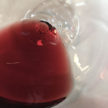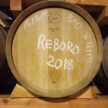Bardolino is an Italian Doc red wine produced on the shores of Lake Garda, in Northern Italy, 30 minutes away from Verona by car. It gets its name from the lovely village of Bardolino overlooking the lake.
According to the new “Disciplinare” (Procedure Guideline) which has recently been approved, Bardolino will be produced with a blend of maximum 95% Corvina (previously the limit was 80%) and Rondinella (minimum 5%). Other grape varieties allowed to be cultivated in the area can be used for a maximum of 20% and with a 10% limit for each variety.
Evidence of vine cultivation in the area dates back to the Middle Ages, when local monasteries inherited the art of winemaking from the Roman tradition and helped by passing it down to the present day. The wine ageing potential became clear during the XIX century when the region started to be renowned for the quality of its wines, already called Bardolino wines. The reputation of the region kept growing: in written documents, people refer to Bardolino wines as “quality wines” and “wines suitable for ageing”.
Bardolino was finally awarded the Doc on the 28th May 1968, thus resulting to be amongst the first Doc in Italy – the Denomination of Origin was introduced in the country in 1963. Bardolino Consortium was created soon after, in 1969. From 2012, with the entry in force of Erga Omnes regulation, the Consorzio is in charge of the proactive safeguard of the appellation, carried out through quality control processes and promotional events, both in Italy and abroad.
In 2017, important changes were made to the Procedure Guideline which became effective on April 12th 2021. Bardolino has concentrated its efforts in promoting three different historical districts: La Rocca, Montebaldo and Sommacampagna. These names were already in use in past centuries and each has a very distinct identity. Changes in the Procedure Guideline regard also other aspects. Yield per hectare has been reduced from present-day 13 tons to 12 tons, whereas for the three districts the maximum yield allowed is 10 tons. The percentage of Corvina allowed has been increased from 80% to 95%. For the production of Bardolino and Bardolino cru only “fresh grapes” can be used and raisined (dried) grapes are prohibited – as it was in the previous Procedure Guideline.
These changes aim to improve Bardolino’s reputation and ageing potential, moving from a daily wine to a wine that can be aged for 5-6 years. Ageing potential is provided also by Bardolino’s noticeable freshness.
![]()


